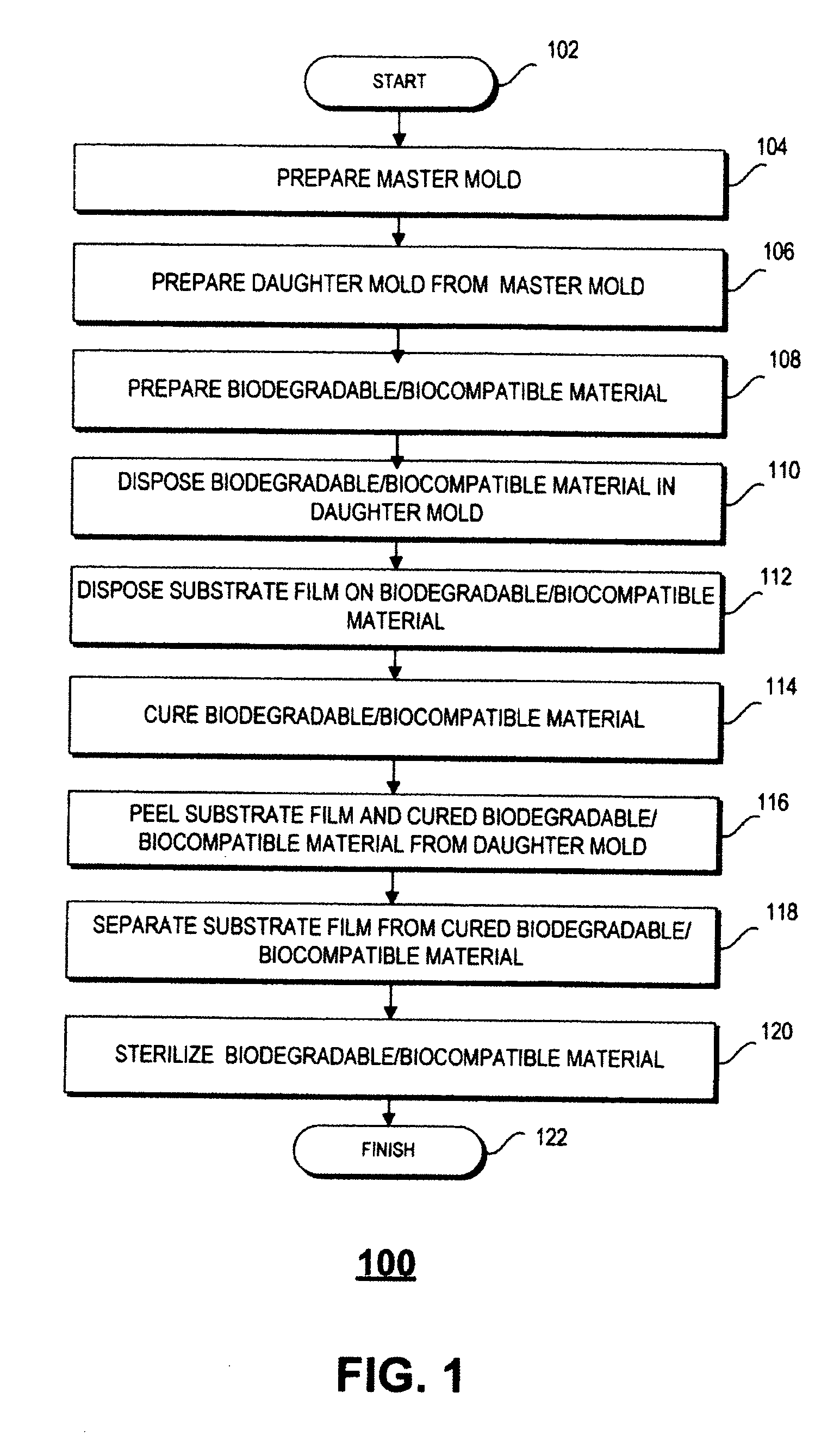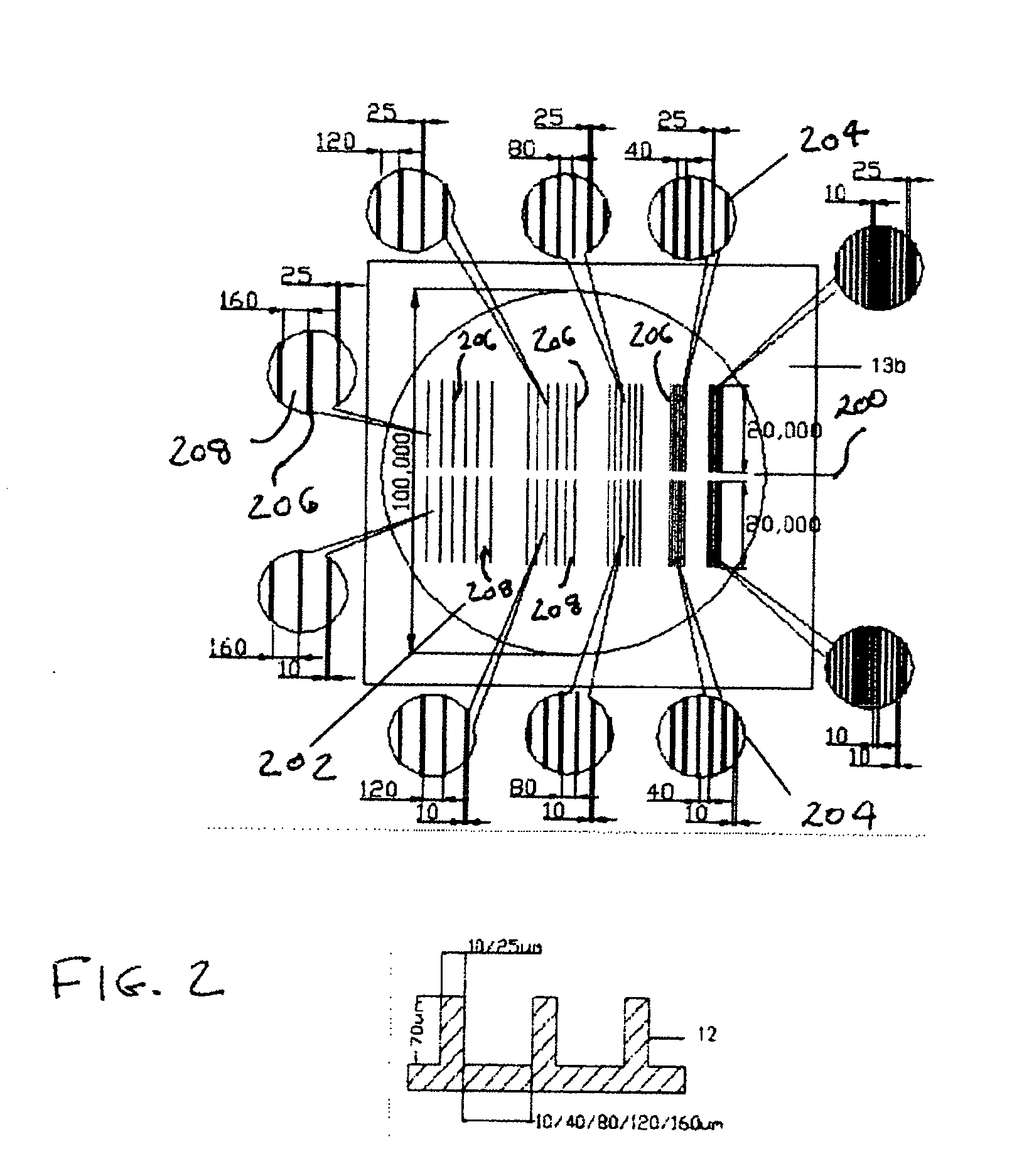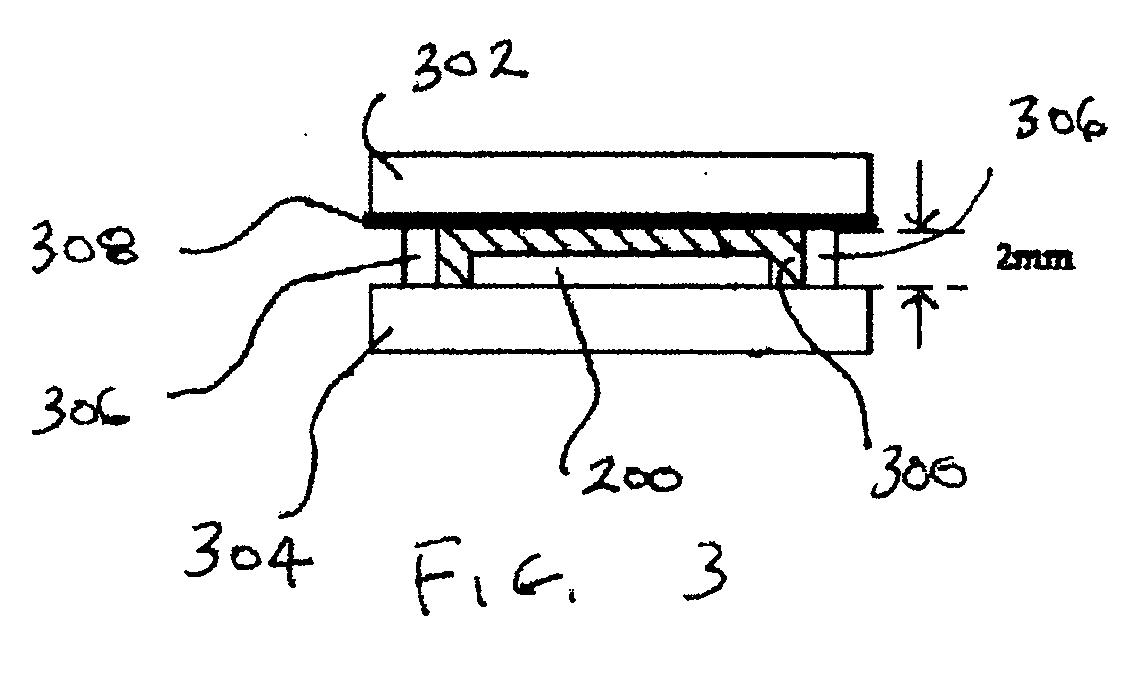Micro-structured and nano-structured surfaces on biodegradable polymers
a biodegradable polymer and micro-structure technology, applied in the field of tissue engineering scaffolds, can solve the problems of inability to easily co-culture and cell positioning, limited scaffolding, and inability to use cells grown on flat surfaces for tissue engineered thick organ structures
- Summary
- Abstract
- Description
- Claims
- Application Information
AI Technical Summary
Benefits of technology
Problems solved by technology
Method used
Image
Examples
Embodiment Construction
[0005] For some embodiments of the present invention, a three-dimensional (3D) biodegradable polymeric film includes a structure of micro-channels, micro-cavities, nano-channels, and / or nano-cavities. An individual channel includes walls that may have aspect ratios in a range between 0.1 to 50. The width of an individual channel in the 3D biodegradable polymeric film may be on a micron scale and / or a nanometer scale for some embodiments.
[0006] In one embodiment, the 3D biodegradable polymeric film may be seeded with tissue cells, may be formed into a substantially cylindrical shape, may be positioned in proximity to a severed blood vessel, and tissue cells from the severed blood vessel may be allowed to grow into the micro-channels, micro-cavities, nano-channels, and / or nano-cavities of the 3D biodegradable polymeric film. For some embodiments, at least one micro-channel and / or at least one nano-cavity may provide three-dimensional entrapment of the tissue cells. The 3D biodegradab...
PUM
| Property | Measurement | Unit |
|---|---|---|
| Fraction | aaaaa | aaaaa |
| Fraction | aaaaa | aaaaa |
| Size | aaaaa | aaaaa |
Abstract
Description
Claims
Application Information
 Login to View More
Login to View More - R&D
- Intellectual Property
- Life Sciences
- Materials
- Tech Scout
- Unparalleled Data Quality
- Higher Quality Content
- 60% Fewer Hallucinations
Browse by: Latest US Patents, China's latest patents, Technical Efficacy Thesaurus, Application Domain, Technology Topic, Popular Technical Reports.
© 2025 PatSnap. All rights reserved.Legal|Privacy policy|Modern Slavery Act Transparency Statement|Sitemap|About US| Contact US: help@patsnap.com



